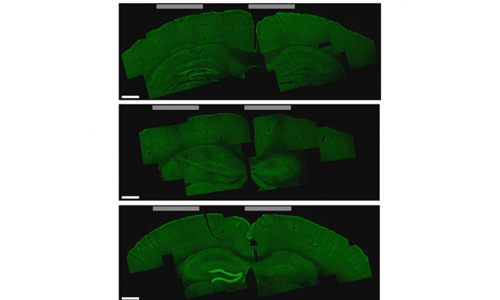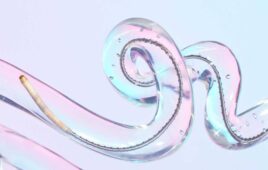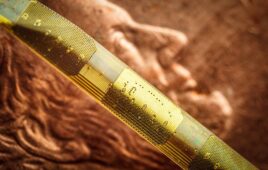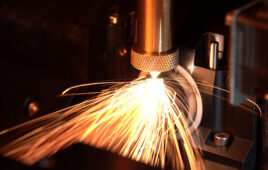6. New non-invasive brain stimulation method could treat autism and more

A brain slice that shows the hippocampus cells that were activated by the new stimulation technique (bottom image, lighter green areas on the left). [Image from the researchers]
In collaboration with Beth Israel Deaconess Medical Center (BIDMC) and the IT’IS Foundation, the MIT researchers have placed electrodes on the scalps of patients to stimulate regions that are deep in the brain, making a non-invasive, less risky and cost-effective way to stimulate the brain.
To treat Parkinson’s disease, electrodes are placed in the sub thalamic nucleus below the thalamus deep within the brain. The electrical impulses that get delivered are known to improve symptoms of the disease, but the surgery itself to implant the electrodes is the risky part.
The MIT researchers have found a way around that to deliver the electrical stimulation deep in the brain through scalp electrodes using temporal interference. Two high-frequency electrical currents are created using the electrodes outside of the brain. The current intersect each other deep inside the brain and a small area of low-frequency current is created inside neurons. The low-frequency current drives neuron electrical activity and the high-frequency current is able to pass through tissues without creating an effect.
Because the frequency of the currents can be tuned, the size and location of the brain tissue that receives stimulation can be controlled. Locations deep inside the brain can be stimulated without surrounding tissues being affected. The stimulation can also be steered without moving the electrode by changing the currents.
Read more about brain stimulation treating autism.








Hey. I have a son in law that suffers from chronic stomach pain and has for many years. He is 44 and has been to John Hopkins, Duke, and smaller hospitals over the last 10 plus years. All they can do is give him medicine. He is disabled, in the bed most of the time, unable to be a husband or father of an autistic 6 year old. He has developed diabetes now. They say there is a disconnect between his brain and the nerve linings of his stomach. I happened to see this article and was wondering if this brain stimulation could be an answer to prayer. What do you think?
Regards,
Pat
Thanks for reaching out, Pat. I’m not an expert, so I don’t know enough to answer your question intelligently. I would suggest reaching out to researchers and companies doing neuromodulation work and get their opinions. EnteroMedics, for example, has a neuromodulation device to treat obesity. (http://www.enteromedics.com/) Perhaps they might have insights? Hope this helps. Hope your son-in-law’s health improves.